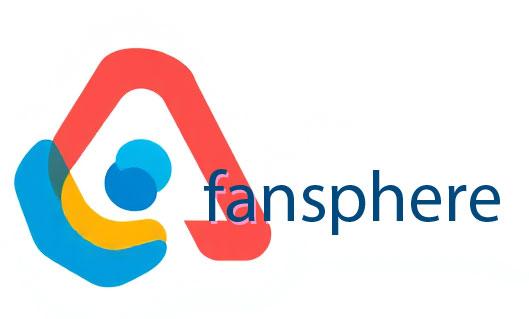Remember those futuristic gadgets from your favorite sci-fi flicks? The flying cars, the self-lacing sneakers, the holographic displays? Turns out, a lot of those aren’t so far-fetched anymore. While we’re not quite zipping around in airborne vehicles (yet!), the line between science fiction and reality is blurring faster than ever before. We’re living in a time where yesterday’s impossible dreams are becoming today’s technological breakthroughs. Let’s take a look at some of the most exciting examples.
The Rise of the Machines (and They’re Pretty Helpful)
Artificial Intelligence (AI) is no longer a plot device confined to the silver screen. It’s woven into the fabric of our daily lives, from the algorithms that curate our social media feeds to the smart assistants that answer our questions. Sci-fi often portrayed AI as a looming threat, a sentient machine bent on world domination. While that’s certainly a compelling narrative, the current reality is far more nuanced. AI powers everything from self-driving cars (still under development, but progressing rapidly) to medical diagnoses, offering us convenience, efficiency, and even life-saving capabilities. We’re seeing AI improve healthcare, personalize education, and even help us write better articles (though it still needs a little work on the humor department!).
Robotics is another area exploding with innovation, driven by leaps and bounds in AI and machine learning. While robots that look exactly like humans are still a bit of a ways off, robots are increasingly sophisticated in their functionality. From warehouse automation to surgical procedures, robots are performing tasks with greater precision and efficiency than ever before, often exceeding human capabilities. Think about the Roomba diligently cleaning your floor – it’s a tiny example of the robotic revolution already underway. The future will likely see much more sophisticated robots seamlessly integrated into our homes and workplaces, assisting with everything from cooking dinner to performing complex tasks in hazardous environments.
Virtual and Augmented Reality: Stepping into the Metaverse (Sort Of)
Remember the immersive virtual worlds depicted in movies like “Ready Player One”? While we might not have fully realized that digital utopia yet, the advancements in VR and AR are remarkable. Gaming is leading the charge, with VR headsets offering increasingly realistic and engaging experiences. But the applications extend far beyond entertainment. VR training simulates dangerous situations for doctors, pilots, and soldiers, allowing them to practice critical skills in a safe environment. AR applications are transforming industries, overlaying digital information onto the real world to enhance productivity and efficiency in fields like engineering, manufacturing, and even retail. Imagine walking through a furniture store and using your phone to see exactly how a sofa would look in your living room – that’s the power of AR. ¿Cómo podría la realidad virtual sustituir a la realidad en el futuro?
The metaverse, a persistent, shared virtual world, is still a work in progress, but the building blocks are steadily being put into place. As VR and AR technologies mature, and as high-speed internet becomes more ubiquitous, we can expect increasingly sophisticated virtual environments that blur the lines between the physical and digital worlds. The possibilities for collaboration, creativity, and even socializing are immense.
Biotech and Beyond: The Body Electric (and Genetically Modified Tomatoes)
Science fiction has long explored the potential of biotechnology, often depicting futuristic medical advancements and genetic engineering. Today, we’re seeing some of these ideas translated into reality. Gene editing technologies like CRISPR are revolutionizing medicine, offering hope for treating genetic diseases and even preventing them altogether. Personalized medicine, tailored to individual genetic profiles, is becoming increasingly prevalent, leading to more effective treatments and fewer side effects.
3D-printed organs are no longer a fantasy. Researchers are making significant progress in creating functional organs in laboratories, offering a solution to organ shortages and revolutionizing transplantation. While widespread application is still some years away, the potential impact on human health is immense. We’re also seeing advancements in prosthetics, with bionic limbs becoming increasingly sophisticated, allowing for greater functionality and even sensory feedback. It’s a field that’s rapidly moving from restoring function to enhancing it, blurring the lines between human and machine.
Space Exploration: To Boldly Go (and Maybe Colonize Mars)
Space travel, once the exclusive domain of science fiction, is experiencing a renaissance. Private companies like SpaceX and Blue Origin are driving down the cost of space launches, making it more accessible than ever before. While we’re not quite travelling to other star systems just yet (interstellar travel remains a significant hurdle), the prospect of establishing a permanent human presence on Mars is now being seriously considered. The challenges are immense, but the advancements in rocket technology, life support systems, and robotic exploration are paving the way for this ambitious goal. Perhaps one day, we’ll be watching the Martian Olympics on our holographic TVs.
Retos y consideraciones
It’s important to acknowledge that alongside the amazing possibilities come significant challenges. The ethical implications of AI, genetic engineering, and space exploration need careful consideration. Ensuring equitable access to these technologies, preventing misuse, and mitigating potential risks are crucial tasks for society to address. The rapid pace of technological advancement requires us to engage in thoughtful and responsible dialogue about the future we’re creating.
But the overall picture is overwhelmingly optimistic. We’re living in a time where the seemingly impossible is becoming increasingly possible. Sci-fi has always served as a powerful tool for imagining the future, inspiring innovation, and driving technological progress. As we continue to push the boundaries of what’s possible, the line between fiction and reality will continue to blur, and the future promises to be even more amazing than we could have ever imagined.























Añadir un comentario